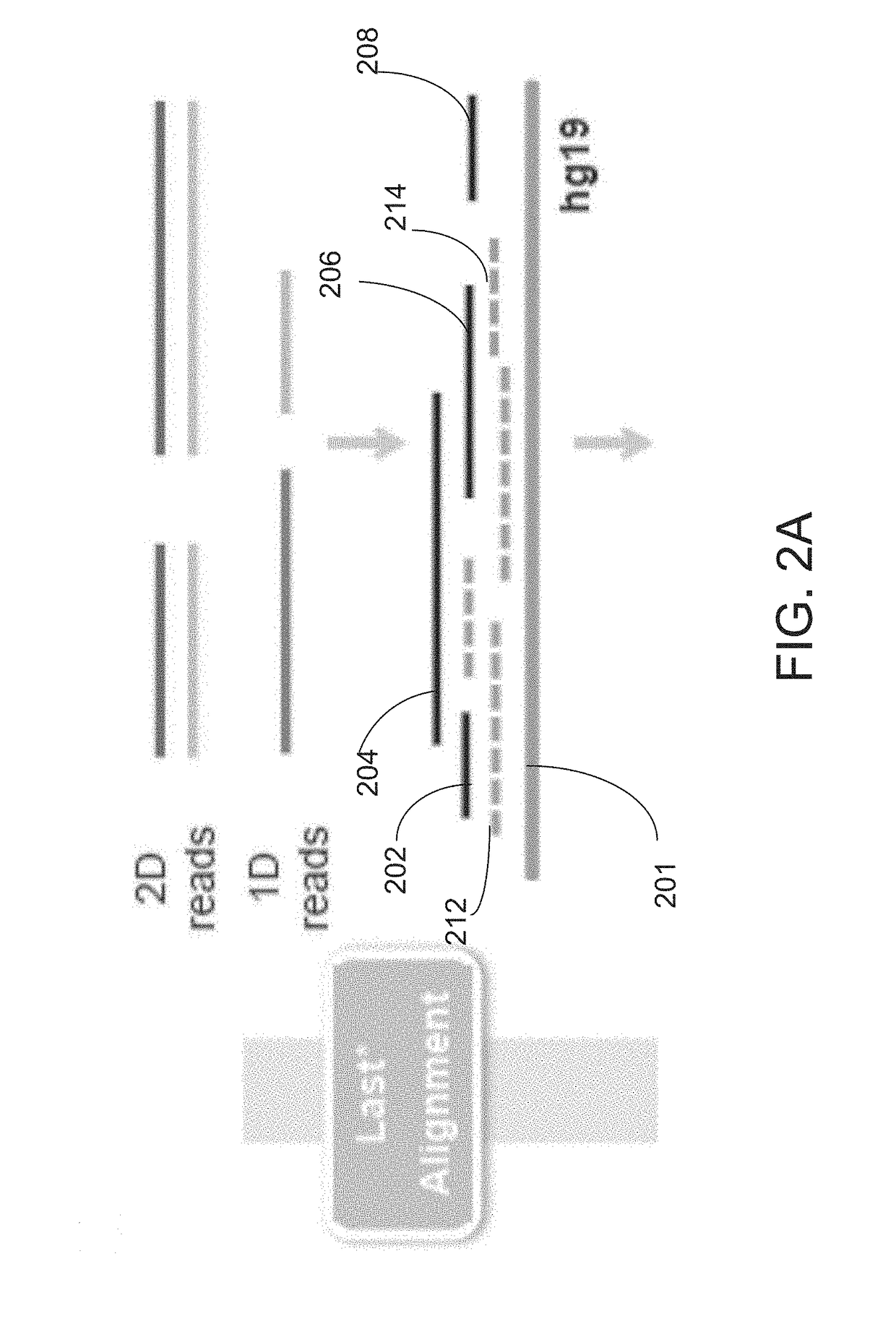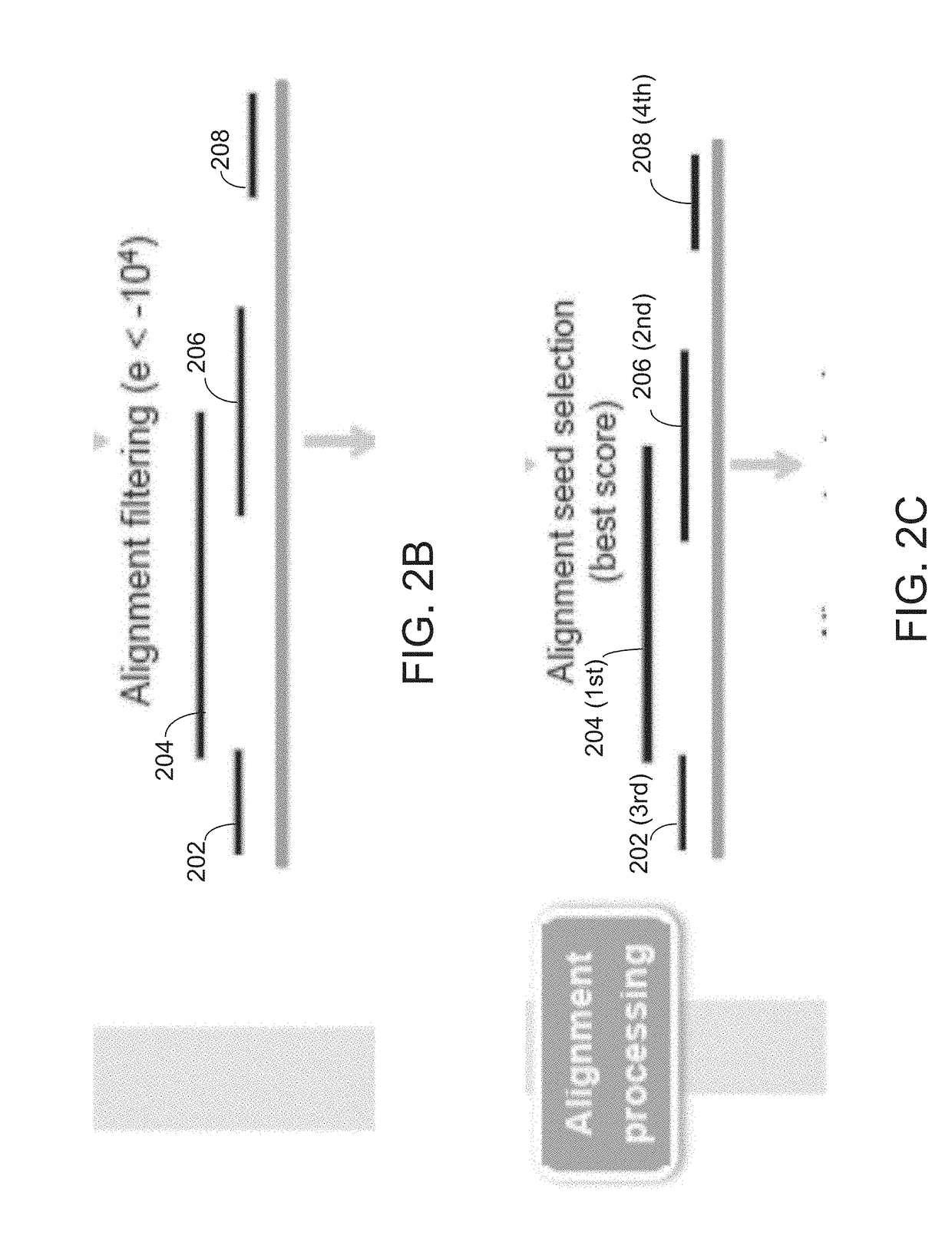Detection of high-resolution structural variants using long-read genome sequence analysis
a genome sequence and high-resolution technology, applied in the field of high-resolution structural variant detection using long-read genome sequence analysis, can solve the problems of low detection accuracy, low detection efficiency, and inability to uncover the full spectrum of various sv classes, and achieve the precision and sensitivity necessary for the detection of many types of svs, particularly in repetitive regions of sequen
- Summary
- Abstract
- Description
- Claims
- Application Information
AI Technical Summary
Benefits of technology
Problems solved by technology
Method used
Image
Examples
Embodiment Construction
[0064]Disclosed herein is a method that employs long-read genomic sequence data (hereinafter termed “long-read data”) to determine the presence of a novel structural variation in a genome and characterize their genomic breakpoints with high specificity and sensitivity. To exploit the value of long reads in SV detection, a computational analysis pipeline is provided, which optimally performs read alignments and logically defines the full spectrum of SVs, including complex SVs enriched in repetitive DNA elements. Embodiments of the computational analysis pipeline of the invention may also be referred to herein as “Picky”). The method of analyzing long-read data to determine SVs in a genomic sample as disclosed herein comprises an end-to-end analysis pipeline that includes three general phases: 1) alignment of long-read data obtained from a long-read sequencing process to a reference genome; 2) optimal alignment merge / selection; and 3) SV classification. The analysis is performed using...
PUM
 Login to View More
Login to View More Abstract
Description
Claims
Application Information
 Login to View More
Login to View More - R&D
- Intellectual Property
- Life Sciences
- Materials
- Tech Scout
- Unparalleled Data Quality
- Higher Quality Content
- 60% Fewer Hallucinations
Browse by: Latest US Patents, China's latest patents, Technical Efficacy Thesaurus, Application Domain, Technology Topic, Popular Technical Reports.
© 2025 PatSnap. All rights reserved.Legal|Privacy policy|Modern Slavery Act Transparency Statement|Sitemap|About US| Contact US: help@patsnap.com



